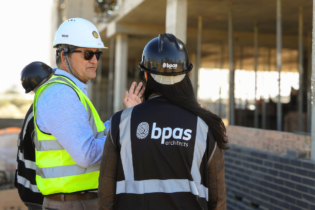While the financial crisis deepens in other parts of the world, the African growth story has just begun, but it’s not clear what role SA will play.
The narrative on South Africa has been souring rapidly and when The Economist displayed the woes of the country on its front cover it hit home, causing notable agitation among people such as Finance Minister Pravin Gordhan. Continuing unrest in the mining sector will take its toll on what was already expected to be slow economic growth for the year. It has played its part in an even larger trade deficit, which widened to R13.8-billion in September, and two ratings agencies also saw fit to downgrade the country’s sovereign rating last month. It would seem that South Africa, once the golden child of the continent, has become the problem child – a dark spot in Africa’s bright future. The country’s growth has been considerably below the average for sub-Saharan Africa – in South Africa, gross domestic product (GDP) growth for 2012 is estimated to be 2.5%, according to Gordhan, but sub-Saharan Africa is expected to record 4.8%. “South Africa still has a significant share of that average. If you remove South Africa, [sub-Saharan] Africa’s GDP growth goes up to 6%,” said Shantayanan Devarajan, chief economist of the World Bank’s Africa region, speaking to the Mail & Guardian at the African Economic Conference in Rwanda’s capital, Kigali, last week. Countries such as Rwanda and Ethiopia are rapidly gaining ground with a projected GDP growth of 7.6% and 7% respectively for 2012. Low base But it is important to remember they are coming from a low base. “The other side of the growth story is the growth tragedy,” Devarajan said. Axel Schimmelpfennig, senior resident representative of the International Monetary Fund in South Africa, said other countries were catching up on per-capita income, which was a welcome and natural process of economic development. But South Africa would not be excluded from the boom. “South Africa has a clear place in the African growth story,” Schimmelpfennig said. “Infrastructure investments that better link the countries of sub-Saharan Africa will be key to promoting a large Africa-wide market that attracts further investment and spurs growth … “Corporates and banks will have opportunities for trade and investment in the region and thus create income and growth opportunities in South Africa as well.” As a semi-industrialised country that was more diversified, the opportunities were many, Devarajan said. A recent World Bank study showed Durban port was far more efficient than any others in the region, with an average waiting time of five days as opposed to 25. It’s not comparable to five hours in Singapore, but it’s still a competitive advantage. Devarajan said South Africa and Mauritius, although more integrated into global financial markets than other African nations, both had strong prudential regulation. “I’m not worried about their exposure to the markets, well, particularly not South Africa.” Vulnerable Although largely removed from global financial markets, African nations are commodity recipients, especially from the East, and remain vulnerable to commodity price shocks. The question of tax administration is important for Africa. In Rwanda, often considered the poster child for African growth, improving the system has resulted in taxes rising from 9% of GDP to 13%. Hlengiwe Mkhize, deputy minister of economic development in South Africa, who was also in Kigali, said South Africa was known to have a tight system. “The system is so good that we have seen a significant improvement in terms of collection.” Tax revenue rose by 10% to R742.6-billion in the past financial year. Devarajan said that, despite these advantages, South Africa had unique challenges. Changes in many African economies could be attributed to an improved policy framework, but the political system in South Africa remained a challenge because it made policy reform difficult.Unrest in the mining sector since August this year is also a cause of investor jitters, but according to Schimmelpfennig, “the recent labour unrests in the mining and other sectors will have only a limited impact on growth and fiscal revenues”. He said the broad macroeconomic position on South Africa continued to hold, but the unrest did highlight the larger challenge of creating good jobs in the country.
South Africa’s unemployment problem is considered by many to be worse than the rest of Africa. “It’s genuine unemployment,” Devarajan said, because the informal sector remained small compared with other African countries where citizens remained poor but were working. Respected internationally Mkhize said that as much as South Africa had legacy issues, it also had legacy advantages. “We didn’t go to war and our banking system is intact and respected internationally.” But investors remain hesitant to enter South Africa. “What puzzles me is why there isn’t more foreign direct investment in South Africa,” Devarajan said. One reason could well be the “oligopolistic nature of the industrial and services sector”. Investors could be hesitant to come in, “if they could even get in at all”, he said. Many had been watching closely to see how Walmart’s entry into South Africa played out, but “in a country like Kenya there hasn’t even been that debate”, he said. Donald Kaberuka, president of the African Development Bank, said the growth, as estimated by the medium-term budget statement, was well below the sub-Saharan average. But the country’s economy accounted for 32% of sub-Saharan Africa and remained the largest in the region. Referring to the unrest in the mining sector, Kaberuka said a new model required the government, business and the mines to compromise. “They cannot resolve these problems on the streets.” Short-term policy He said the national planning commission’s development plan provided an answer to the problems South Africa faced. “The plan indicates they know exactly what to do, so they should get down and implement it.” “It has started to send a message that, when creating short-term policy, we need to be conscious of the long-term vision,” Mkhize said. “It helps us decide what footsteps to take. It has helped us a lot.” But, she said, some departments needed to get on board – “like those in education – [they] need to look at that and see ‘how do we get there?'” “An important pillar of this plan is education, ensuring that the school and university system equips students with the skills needed to find good jobs and successfully compete in the global market place,” Schimmelpfennig said. The disconnect between government bodies has long been identified as a challenge. Mkhize said the integrated infrastructure plan would make headway in remedying this because it required everyone to work together. “We will use infrastructure as a point of leverage to do all the things we have to do.” Lisa Steyn attended the African Economic Conference as a guest of the African Development Bank http://mg.co.za/article/2012-11-09-sa-not-as-bad-as-the-economist-thinks






